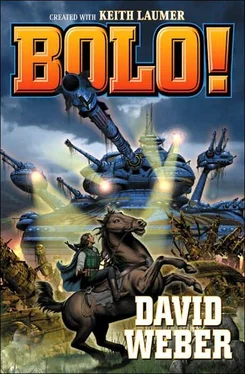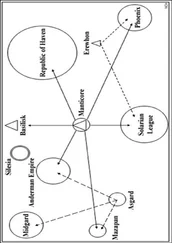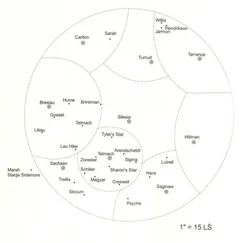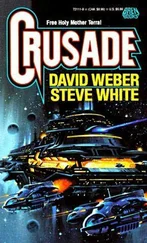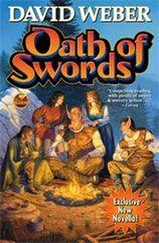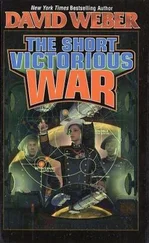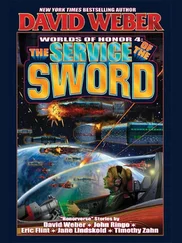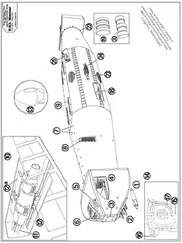MARK XVI BOLO (Retarius) (2650):
The increasing size of the Mark XV led to a fresh attempt at specialized design, and the Mark XVI was, in effect, a “light” Mark XV. Main armament remained a 50cm Hellbore, but the infinite repeater batteries were reduced to a total of eight weapons and the howitzer armament was deleted. (As partial compensation, the Mark XVI replaced its laser infinite repeaters with ion-bolt projectors, with much greater ability to penetrate ablative armor, and received a six-gun battery of short-range breech-loading 20cm mortars to augment its anti-personnel clusters.) A complete ablative outer hull was adopted to replace previous appliques, and cybernetics were equivalent to those of Mark XV/R. Weight fell to 3,600 tons, and road speed rose to 90 kph with short duration “sprints” of up to 100 kph possible. The Mark XVI formed the “light regiments” of the original Dinochrome Brigade.
MARK XVII BOLO (Implacable) (2650):
Introduced simultaneously with the Mark XVI, the Mark XVII was the “heavy” version of the same basic weapon system. Main armament was upgraded from a 50cm Hellbore to a 60cm weapon, and the ion-bolt infinite repeaters were increased to a total of fifteen (six each in two lateral batteries with a three-gun frontal battery in the glacis). The Mark XVI’s mortars were deleted in favor of six 25cm howitzers and an increased missile armament. Weight increased to 6,500 tons, and maximum road speed dropped to 75 kph. The Mark XVII formed the “heavy regiments” of the original Dinochrome Brigade.
MARK XVIII BOLO (Gladius) (2672):
While the Mark XVI was more agile and easier to deploy than the Mark XVII, it proved less popular in combat than its companion mark because of its lighter offensive power. The Mark XVIII replaced both the XVI and XVII in relatively short order as the new “standard” Bolo in an attempt to combine the best features of both its immediate predecessors. As usual, the new vehicle went up in size and weight (late-model Mark XVIIIs approached 10,000 tons), and space-to-ground deployment became a problem. Main armament was the Mark XVII’s 60cm Hellbore, but the infinite repeaters were reduced to twelve with the deletion of the bow battery (which had been found to compromise the structural integrity of the glacis plate). The Mark XVIII adopted a “sandwiched” hull: an outer ablative hull, then a thin hull of early-generation duralloy, and finally the flintsteel main war hull. The Mark XVIII also added a third fusion plant, which, with additional improvements in fire control, plasma containment technology, and weapons power, permitted its Hellbore to engage spacecraft even in medium orbit. The Mark XVIII formed the first “general purpose” regiments of the Dinochrome Brigade and, in successive models, remained first-line Concordiat equipment for over a century. Maximum road speed fell to 70 kph and maximum “sprint” speed fell to only 80 kph, but except in the roughest terrain, a Mark XVIII was as fast cross-country as on a road. (Of course, for vehicles as large and heavy as a Bolo, “roads” had long since become a purely relative concept.)
MARK XIX BOLO (Intransigent) (2790):
The Concordiat originally anticipated that the Mark XIX would remain first-line equipment for at least as long as the Mark XVIII, as it marked the first true qualitative improvement on the old Mark XV. The Mark XVI, XVII, and XVIII had been essentially up-gunned and up-armored Mark XVs; the Mark XIX was the first Bolo to mount mono-permeable, anti-kinetic battle screen as its first line of defense against projectile weapons and to incorporate the ability to convert a percentage of most types of hostile energy fire into useful power. In addition, the Mark XIX was accompanied into service by the Navy’s new specialized armor transport: a light cruiser-sized vessel mated to a pair of Mark XIXs and capable of rough-field landings in almost any terrain (short of swamp or truly precipitous mountains). The transports were a vast improvement over the older independent assault pods, thus greatly simplifying the deployment problems experienced with the Mark XVII and XVIII. Improved generations of pods remained in service for almost four more centuries, particularly for battalion or larger level assaults. Main armament remained a 60cm Hellbore, but secondary armament was upgraded to sixteen ion-bolt infinite repeaters, backed up by 35mm gatling/railguns. The howitzer armament was once more suppressed in favor of eight 30cm breech-loading mortars, and the ablative outer hull was further augmented by a “plasma-shedding” ceramic tile applique. Weight soared to 13,000 tons, but road speed actually rose to 90 kph, with a “sprint” capability of over 120 kph.
MARK XX/B BOLO (Tremendous) (2796):
The reign of the Mark XIX was shorter than anyone had anticipated primarily because no one had anticipated the psychotronic breakthrough. (Or perhaps it would be more accurate to say that no one had expected the High Command to accept the psychotronic technology as quickly as it did.) The Mark XX Tremendous was the first truly self-directing (and self-aware) Bolo. Defensive capabilities remained unchanged from the Mark XIX, but the internal volume demands of the Mark XX’s psychotronics forced the main armament to be downsized, and the Mark XIX’s single 50cm Hellbore was replaced by two 30cm weapons, twin-mounted in a single turret. In addition, the Mark XX/M (unofficially referred to as the “Mosby”) was a unique departure. Designed for independent deployment to raid an enemy’s logistics and rear areas, the XX/M was essentially a refitted Mark XIV hull. The considerable mass of its first-generation Hellbore, along with its turret, was deleted, which freed up sufficient internal volume (barely) to permit installation of a somewhat less capable version of the Mark XX’s psychotronics. Although self-aware, the Mark XXs had relatively simple (and bloodthirsty) personalities, and full self-awareness was specifically limited to battlefield applications. Except in carefully defined combat-related areas, the Mark XX’s software suppressed its volition, effectively prohibiting it from taking any action without direct orders from designated human command personnel. Weight and speed data for the Mark XIX apply to the Mark XX. The Mark XX’s great opponents were the Yavac heavies of the Deng, but not even the Yavac-A/4 could survive against a Mark XX Bolo without a numerical superiority of at least 3.25-to-1.
MARK XXI BOLO (Terrible) (2869):
Following the introduction of the Mark XX, a nomenclature policy was adopted under which new mark numbers were to be issued only to reflect substantial increases in psychotronic capability. (The new practice was temporarily abandoned with the Mark XXVII-Mark XXIX series, but resumed with the Mark XXX.) The Mark XXI actually proliferated into several sub-variants which would have received their own mark numbers under the old system, including yet another attempt at a “heavy” Bolo (which tipped the scales at over 20,000 tons and was never adopted for field use), and the “stealth” forward reconnaissance XXI/I. Mainstream Bolo development, however, followed the “standard” format, and the Mark XXI/B reverted to the single 60cm Hellbore main armament of the Mark XIX. The major advance lay in the enhanced computational speed of the mark’s computers and improvements in the personality centers of successive models. Although still fringed about by inhibitory programming to control self-directed actions outside combat, the Mark XXI was much more capable in combat. This mark also saw the introduction of TSDS (Total Systems Data-Sharing) technology into the regiments of the Dinochrome Brigade. In practice, each unit of the regiment operated in battle as a single component of a multiunit awareness in a free-flow tactical link which combined the conclusions of all its Bolos to formulate future actions.
Читать дальше
